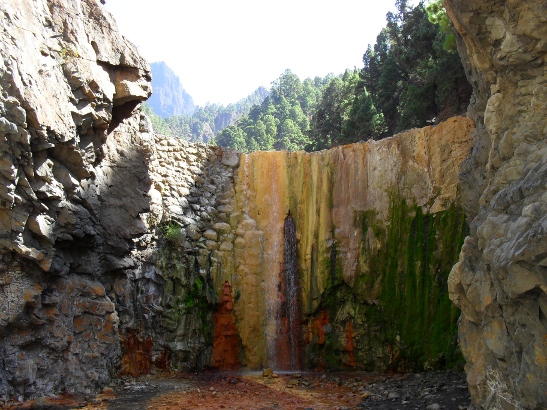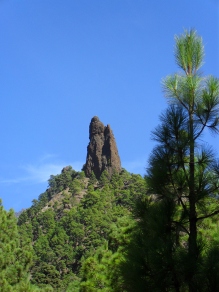Cascada Colorada EarthCache
-
Difficulty:
-

-
Terrain:
-

Size:  (not chosen)
(not chosen)
Related Web Page
Please note Use of geocaching.com services is subject to the terms and conditions
in our disclaimer.
The Cascada Colorada (colorful waterfall) is located in the
national park Caldera de Taburiente. During your hike to this
waterfal, you will encounter magnificent views and some geological
features.
 The Caldera de Taburriente is a ring of summits 8 km in diameter,
with drops of up to 2000 m, e.g. from Roque de los Muchachos
(2436 m), the higest point, down to Dos Aguas, at the Park
exit, in Barranco de las Angustias (Gorge of Fear).
The Caldera de Taburriente is a ring of summits 8 km in diameter,
with drops of up to 2000 m, e.g. from Roque de los Muchachos
(2436 m), the higest point, down to Dos Aguas, at the Park
exit, in Barranco de las Angustias (Gorge of Fear).
 View into the Caldera de Taburriente from its edge
View into the Caldera de Taburriente from its edge
 Roque de Idafe
Roque de Idafe
Interesting geological formations in the park include: pillow lava
(of submarine origin), dykes (vertical walls formed by lava which
onces flowed inside crevices), lava flows, volcanic cones and
pyroclastic mantles (of striking colours). Finally, the roques
(chimney rocks or isolated crags), products of erosion or
avalanches, stand out. Especially the Roque de Idafe, in the center
of the Caldera. Where the Benahoaritas came here to praise their
God, Abora.

Pillow lava can be found in the Caldera de Taburriente
Water is the main source of erosion in the Caldera. Water does not
flow at a constant rate, but varies through the year.
To log this earthcache: Measure the width of the Rio Almendro
Amargo at about 30 meters (100 feet) downstream of the
Cascada Colorada. Photos of you before the waterfall and other
geological features in the Caldera are greatly appreciated.

Additional Hints
(Decrypt)
Zhpu zber vasbezngvba pna or sbhaq va gur Freivpr Pragre.
Treasures
You'll collect a digital Treasure from one of these collections when you find and log this geocache:

Loading Treasures